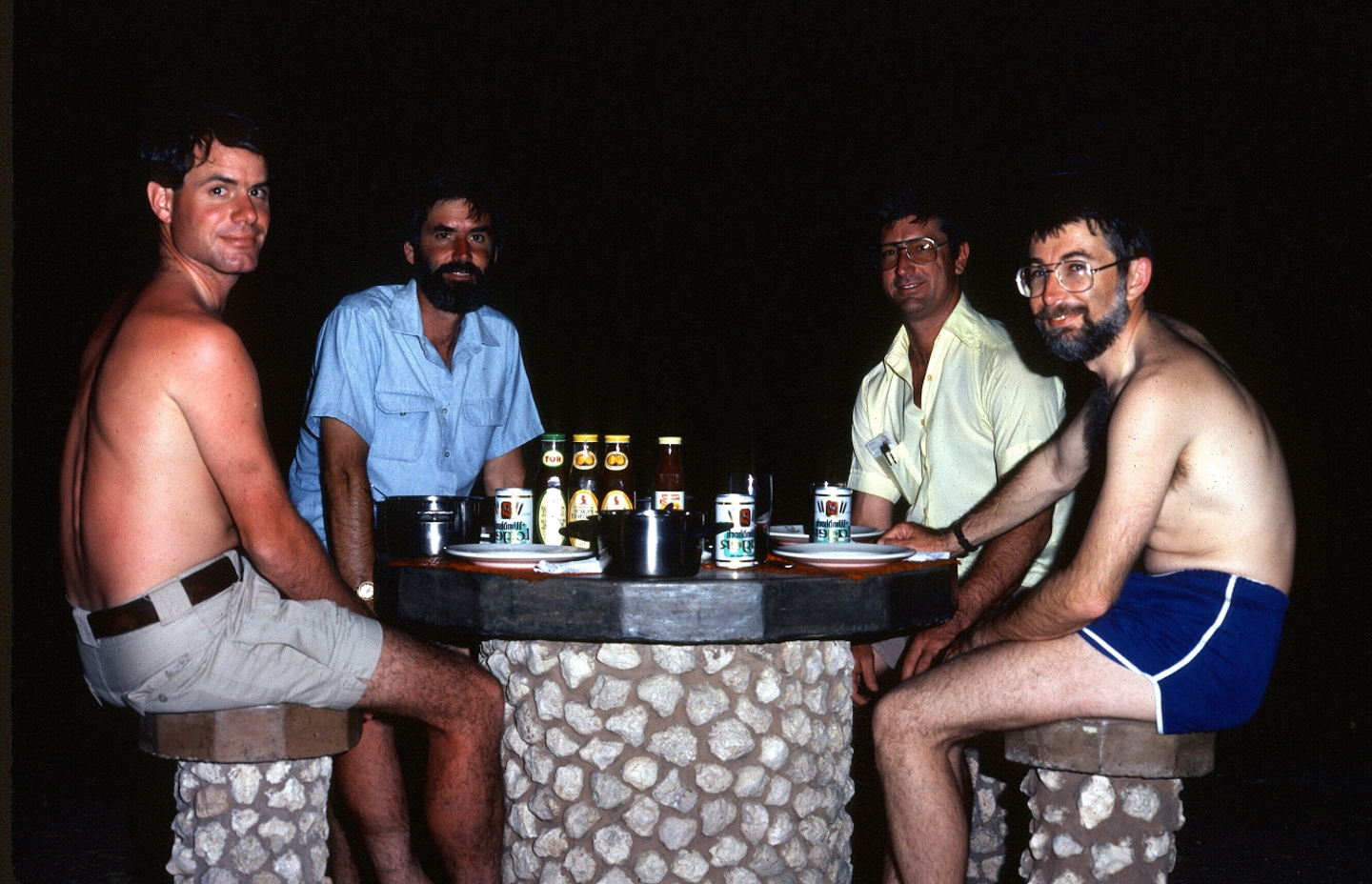23 Wide-foraging for lizards
Earlier I described my first field project (spring 1965, UC Berkeley), watching Great Blue Herons foraging in Marin County (Chapter 10). In spring 1968, I was finishing my first year of a Master’s program in Zoology at UT Austin. The Zoology department was running a job search for an ecologist, and Eric Pianka was one of the candidates. I knew his 1966 paper in Ecology, in which he noted that desert lizard species in North America used different foraging modes: “widely-foraging” species moved in search of food, whereas “sit-and-wait” were ambush predators. Eric described the ecological signficance of this difference. I was fascinated because the herons I watched used similar foraging modes, except that my herons used both (Chapter 10).
Eric gave a fantastic job seminar, got the job. and arrived in Austin in September 1968. We quickly became friends. As I described Earlier (Chapter 14) I’ve described how Eric hired Larry Coons and me to run a study of species diversity of lizards in the Kalahari Desert. I late August, Larry and I headed to Africa and started fieldwork in late November 1969. Eric joined us in January for two months.
We soon noticed that the lacertid species (all forage on the ground) were widely-foragers or sit-and-waiters. We don’t recall who spotted this pattern first, but we suspect it was soon obvious to us, given Erics prior observations with North American lizards and mine with herons (Chapter 10).
We finally published a paper (“Ecological consequences of foraging modes”) in Ecology in 1981. That paper helped jump start studies of foraging mode, has been called a “seminal paper” (McBrayer et al. 2010), and has been cited well over 1350 times.
Several steps were required before we could jump from our descriptions of foraging modes to an appreciation of their ecological consequences (for example, their effects on prey type, prey volume, risk of predation, reproductive effort, and even morphology). Moreover, we never quantified movement patterns in 1969-1970. Consequently, we made an additional field trip (1975-6) and quantified movement patterns for several species (see Huey and Pianka, 1981).
The story of the steps (and associated insights) involved in the “evolution” of our foraging-mode paper (1981) are reviewed in Huey and Pianka (2010), and so I won’t detail them here. We recount how just watching foraging by lizards and their predators – and asking questions about the consequences of these movement patterns – uncovered novel insights into the biology of these lizards and to other groups of predators.
Here’s one example. One of the potential hazards of searching for lizards in the Kalahari are horned adders (Bitis caudalis), which lie buried in the sand (except for their protruding eyes), waiting for a lizard to walk by. We would often accidentally step on a buried adder (we were looking for lizards at a distance and not watching where we stepped), which would leap completely out of the sand and strike aggressively at our boots and bare legs. We’d do a dynamic “Kalahari two-step,” trying to avoid the snake’s fangs.
After one such encounter, I suddenly realized that horned adders are archetypal sit-and-wait predators; and then I predicted that horned adders would likely encounter and eat widely-foraging lizards. When we checked diets of horned adders, we found that horned adders were indeedneating many more widely-foraging lacertids than sit-and-wait ones, even though the latter were more abundant. Thus, foraging mode can ‘cross-over’ between trophic levels.
In 1981 I received a NSF grant to return to the Kalahari with three superb physiological ecologists. Al Bennett (UC Irvine), Henry John-Alder (Al’s grad student), and Ken Nagy (UCLA). We spent several weeks studying the energetics (did WF lizards have relatively high energy expenditures but nonetheless have high food intake? yes), accompanied by laboratory comparisons (did WF lizards have relatively more stamina but reduced speed? generally yes). Once back in Chicago, where Al was on sabbatical leave, we evaluated whether lizards differing in foraging-mode also differed in aerobic capacity and activities of key enzymes (they did).

This was the most productive (five publications) and one of the most fun field trips I’ve ever had. What an opportunity and treat to work with consummate professionals!